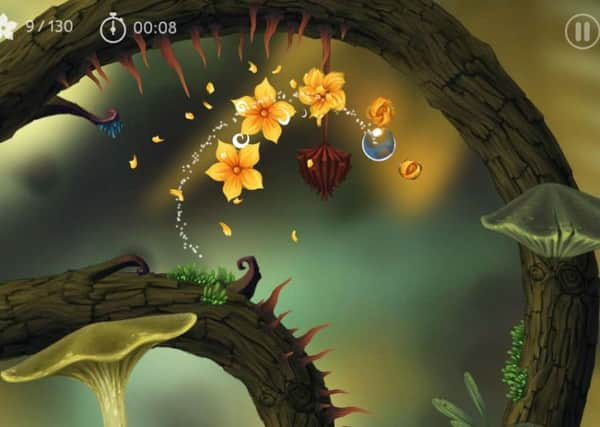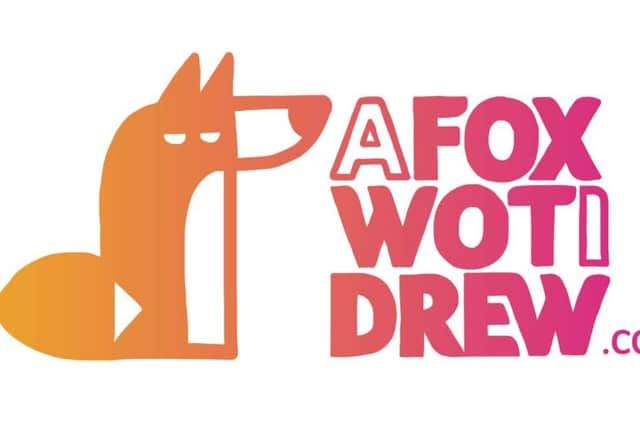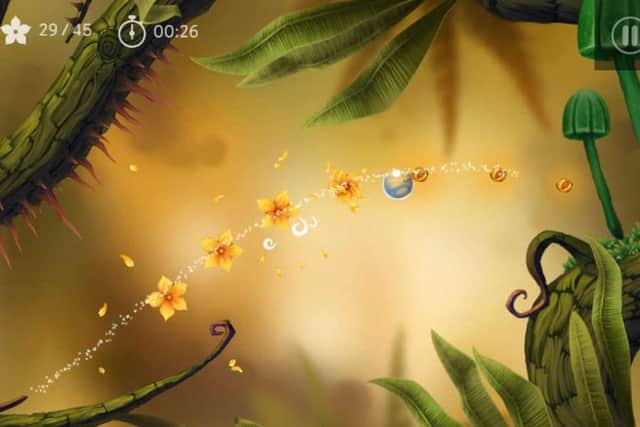Dundee start-up launches first game title, Baum


Schoolchildren were among the first to play new title at the University of Dundee last Friday during a special launch event, where the design team gave an educational talk for those wishing to follow in their footsteps.
Translated from the German for ‘tree’, BAUM is a physics-based challenge created by A Wot I Drew which has initially been released solely for iOS devices.
Advertisement
Hide AdAdvertisement
Hide AdThe game is said to be inspired by sources as varied as Sonic the Hedgehog and Gustav Klimt’s mural “The Tree of Life”.
BAUM challenges players to guide a raindrop through and over flowers, tree limbs, thorns and mushrooms using just the power of wind with an intricately-designed backdrop.
Dom Littler, Creative Director for A Fox Wot I Drew, said: “We are thrilled to be launching our first game and really excited that it is going straight into the Apple store and in twelve different languages, giving us a global audience straightaway.”
The company is the work of trio Dominic Littler, Dan Allan and Kai Creedon, who originally joined forces for Abertay University’s `Dare To Be Digital’ competition in 2014. The three men won the inaugural Design in Action/Dare to be Digital Prize for Commercial Potential, worth £20,000, thus allowing them to create their first project.
Along with their prize money, the team secured studio space and equipment within Abertay’s School of Arts, Media and Computer Games (SAMCG). A Fox Wot I Drew also benefited from business and marketing support from the University of Dundee’s Design in Action scheme as well as mentoring from local illustrator and designer Lyall Bruce, the co-founder of Creative Dundee.


Brian McNicoll, Design in Action Business Partnership Manager, said: “Not many debut games are of this calibre and the fact it’ll support 12 different languages at launch is a real testament to the hard work they’ve put in.
“This project also offers tremendous evidence of what our creative games companies can achieve when they are given proper support and room to develop, which has been the commitment of Design In Action. The reality of trying to make it in the games sector, which is heralded as a growth sector and is featured heavily in the Scottish Affairs Committee’s Creative Industries in Scotland Report, is complex, competitive and resource-intensive.“
Advertisement
Hide AdAdvertisement
Hide AdProfessor Gregor White, Head of SAMCG at Abertay University, said: “BAUM is a thoughtful, charming and well-crafted game, and its launch is a great example of how the games community in Dundee works together to support local talent. We’re pleased to have been able to work with Design in Action to help A Fox Wot I Drew to develop and release this great game.


“It’s always a pleasure to see our graduates release their first game, and we look forward to more work from this exciting young team.”
Design In Action is a £5m Knowledge Exchange Hub for the Creative Economy, established in 2012 and funded primarily by the Arts & Humanities Research Council to the level of £4.1m with additional support from Creative Scotland.